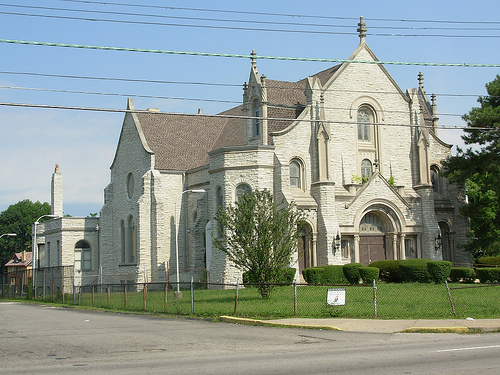 Reverend Clarence Wallace has been with Carmel Presbyterian Church (map) in Avondale for 32 years. As an African-American growing up in the south during the civil rights movement, he experienced both segregation and integration first-hand. These life experiences helped to mold the high level of social consciousness that is still with him today.
Reverend Clarence Wallace has been with Carmel Presbyterian Church (map) in Avondale for 32 years. As an African-American growing up in the south during the civil rights movement, he experienced both segregation and integration first-hand. These life experiences helped to mold the high level of social consciousness that is still with him today.
“I’ve worked as a drug and alcohol counselor, witnessed Klan rallies, and was working in Harlem when Martin Luther King was stabbed. I could tell you many stories.”
Today, however, it is the story of the modern day ‘urban church’ that keeps him occupied. An unfinished story filled with both hope and adversity.
In Avondale, it is virtually impossible to miss the diverse collection of historic churches that line the streets of the neighborhood. However, while their stunning architecture is viewed as an asset, there are also challenges that these places of worship face including competition from mega churches, declining parish sizes, tight economic conditions, high maintenance and utility costs, and growing social needs from their members.
Built in 1890, Carmel Presbyterian brings along with it a unique set of financial challenges. Upkeep of the historic building is extremely expensive, and high utility costs are placing a burden on the church which is already devoting most of its resources to social and community development. These challenges, together with an economic recession that has hit neighborhoods like Avondale particularly hard, have created a difficult financial situation for ministers like Reverend Wallace.
“The poor continue to come in with more social needs than spiritual needs, and the costs keep rising. The urban church is being challenged as never before with this economic recession,” explained Wallace. “What would be viewed as a cold in a suburban church can be viewed as pneumonia here in the urban core.”
The church’s situation is complicated further by the fact that 75 percent of the congregation comes in from outside of the neighborhood. The group, most of which are originally from Avondale, has stayed loyal to the church over the years. The church has been seen as one of the few constants in the neighborhood during otherwise troubling times, and Wallace views the emigrating parishioners as part of the solution to helping bridge both the economic and social divide.
“We serve different people with different needs and sometimes it becomes difficult to meet these needs, but whether affluent, working class, or poor, they all worship one god and this is the common factor that brings them together…and with time this can help to benefit the entire community.”
Wallace emphasizes that while it is extremely challenging during these economic times, giving up is not an option.
“Is it easy? Certainly it’s not easy, but leaving would never cross my mind.”





